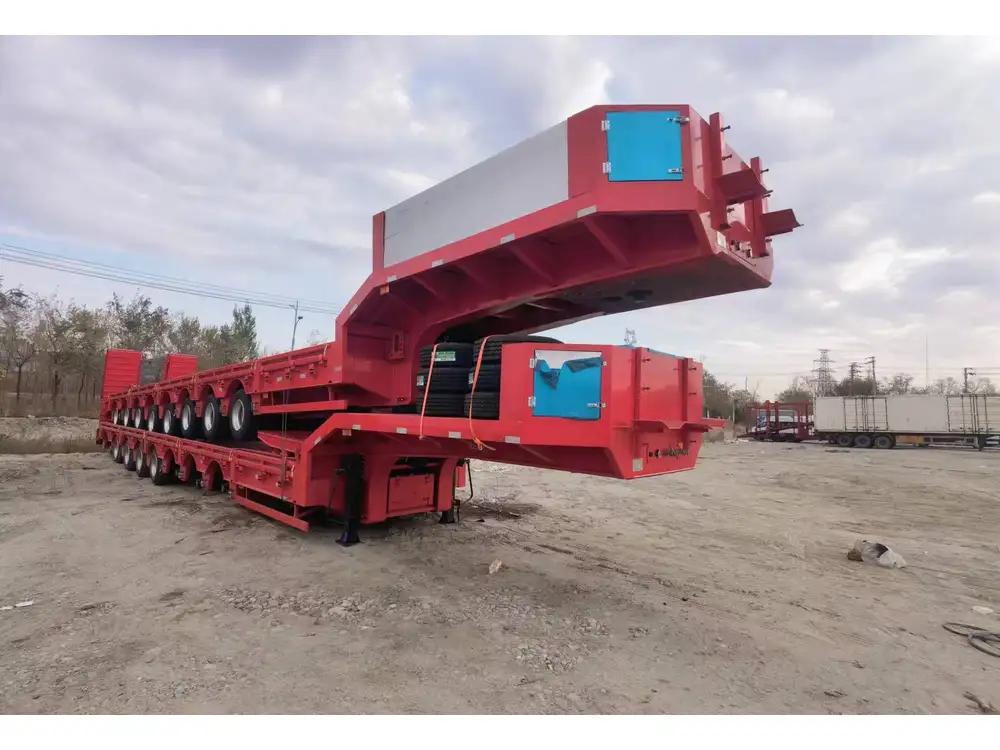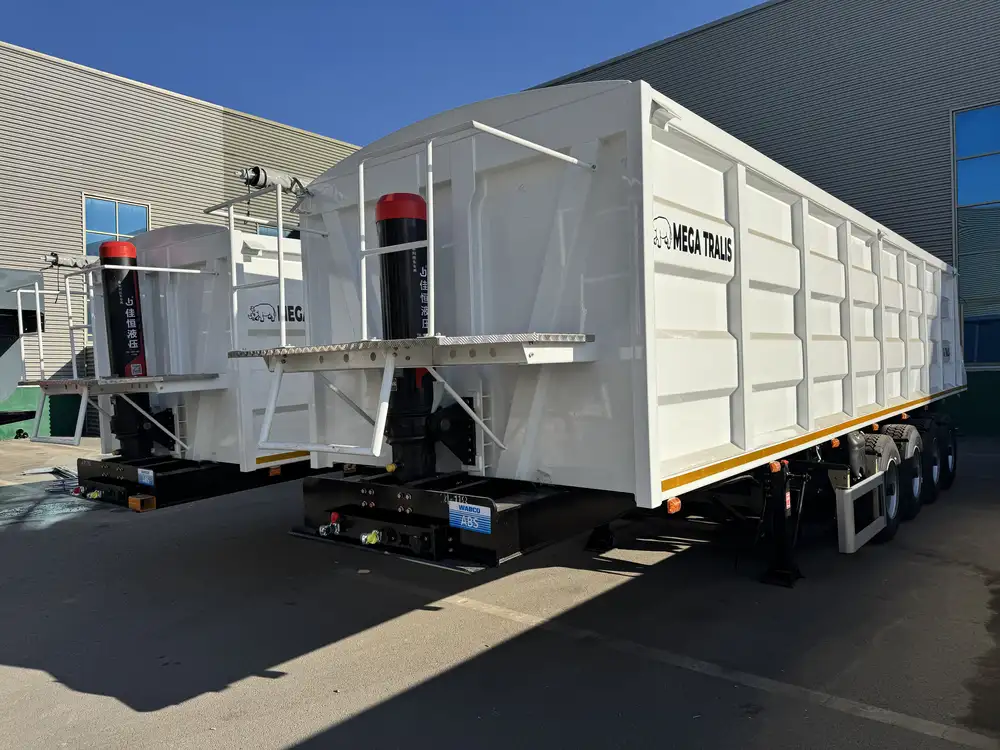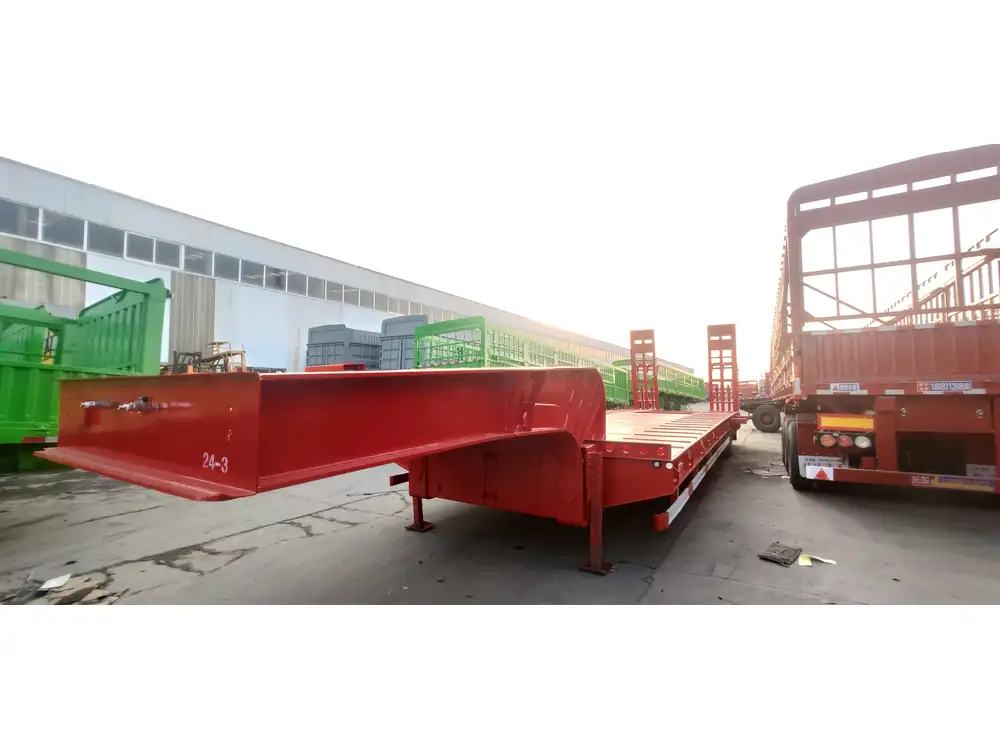When considering the logistics and transportation industry, understanding the dimensional specifications of semi-trailers is paramount. Measurements play a vital role, impacting not just the operability of the vehicle but also compliance with legal restrictions and highway regulations. This comprehensive guide delves deeply into the lengths of semi-trucks and their trailers, offering useful insights to manufacturers, fleet operators, and logistics managers alike.
The Basics of Semi-Trailer Lengths
Understanding Semi-Trailers Defined
A semi-trailer is a trailer designed to be towed by a semi-truck, featuring a unique structure where a portion rests on the truck itself. This design allows for varying lengths and capacities based on specific needs, such as cargo types and operational routes. A typical semi-trailer is categorized by various measurements, which typically include:
| Measurement | Description |
|---|---|
| Overall Length | Total length from the front of the semi-truck to the back of the trailer. |
| Trailer Length | The length of the trailer excluding the truck’s cab. |
| Kingpin to Rear Axle | Distance from the point where the trailer connects to the truck to the rear axle of the trailer. |

Maximum Legal Lengths
The legal length of a semi and trailer combination is crucial for compliance. In the U.S., the federal law regulates maximum lengths for tractor-trailer units, though individual states may have own regulations. Here are some key points:
- Federal Regulations: The maximum allowable length for a semi-trailer on interstate highways is typically 53 feet.
- Overall Vehicle Length: If we include the tractor, the length can reach an overall maximum of 75 feet in most cases.
- Permits for Longer Trailers: Some states might allow longer configurations (up to 57 feet for trailers in specific circumstances) with additional permitting, showcasing the need for compliance at state as well as federal levels.
Variability Based on Design and Configuration
Semi-trailers come in various designs, each with its own length specifications. Common configurations include:
| Configuration | Average Length | Common Uses |
|---|---|---|
| Standard Flatbed | 48 to 53 feet | Transportation of construction materials and oversized items. |
| Reefer Trailers | 48 to 53 feet | Hauling temperature-sensitive goods. |
| Tanker Trailers | 40 to 53 feet | Liquid transportation, including fuels and chemicals. |
| Lowboy Trailers | 20 to 30 feet | Hauling heavy machinery and equipment. |
Calculating the Optimal Length for Your Needs

Determining Your Load Type
Understanding the type of cargo being transported is fundamental to selecting the appropriate semi-trailer length. For instance, while flatbeds can accommodate larger loads, they may require added securing systems to ensure safety and compliance.
Weight Considerations and Payload Capacity
Apart from length, the weight capacity is also pivotal:
- Typical Semi-Truck Weight: A fully loaded semi-truck can weigh up to 80,000 pounds, which includes both tractor and trailer.
- Payload Capacity: Depending on trailer design, the payload can vary, but it often leaves a margin for additional weight as per the federal weight limit for public roads.
Economical Aspects of Trailer Length
Selecting the right length can dramatically impact operational costs:
- Fuel Efficiency: Shorter trailers tend to be more fuel-efficient, while longer trailers, although capable of carrying more, may incur higher fuel expenses due to increased drag.
- Tolls and Fees: Many jurisdictions impose tolls based on vehicle length, so longer setups can lead to higher operational costs.

Practical Implications of Trailer Length
Impacts on Maneuverability
Longer trailers often come with challenges in urban environments where turning space is limited. Understanding the turning radius and how it correlates with the length of the tractor-trailer configuration can prevent logistical nightmares. A key consideration is:
- Turning Radius: As a rule of thumb, the longer the trailer, the wider the turning radius. This can complicate deliveries in tight spaces, warranting better navigation planning.
Compliance with Local Regulations
Navigating state and local regulations regarding trailer lengths can be labyrinthine. Each state possesses its own legal frameworks, which may vary alertly from federal dictates. It is advisable for operators and manufacturers to maintain up-to-date knowledge of such regulations, which can be often found through state departments of transportation.

Special Considerations for Specialty Trailers
Equipment Trailers and Transporting Heavy Machinery
For specific sectors such as construction or heavy machinery transport, specialized trailers, including lowboys, come into play. These configurations often necessitate unique considerations concerning length, often ranging from 20 to 30 feet, allowing for the transportation of oversized equipment safely.
Reefer Trailers for Perishable Goods
When transporting temperature-sensitive goods via refrigerated trailers, length also matters but must be coupled with temperature control efficiency. Reefer trailers typically fit within the conventional 48 to 53-foot range, balancing adequate space for palletized goods without losing efficiency in temperature regulation.

Flatbed Structures for Varied Cargo
Flatbed trailers tackling oversized loads may breach a maximum allowable length, leading to potential permit requirements. Various state laws govern the legalities surrounding these configurations, which heightens the importance of understanding local traffic regulations.
Top Questions Around Semi-Trailer Lengths
What is the maximum legal length for a semi and trailer combination?
- As previously noted, the maximum length for a semi-trailer on federal highways is 53 feet, often aggregating to 75 feet when considering the tractor.
How does trailer length affect load capacity?
- Longer trailers allow for greater volume, thus improving potential load capacity. However, balance with weight regulations is crucial to ensure compliance.
Are longer trailers more fuel-efficient?
- Generally, shorter trailers hold an advantage in terms of fuel economy due to lower aerodynamic drag. However, operational requirements may outweigh fuel considerations at times.
How can I ascertain my specific state’s trailer length regulations?
- It is essential to visit your specific state’s Department of Transportation website, where detailed compliance regulations are posted.
Conclusion: The Importance of Choosing the Right Length
The choice of semi-trailer length can significantly influence the efficiency, compliance, and cost-effectiveness of transportation logistics. Whether for managing freight flow in urban sectors or ensuring compliance with complex regional regulations, understanding the dimensions involved aids in informed decision-making.
Addressing your operational needs, regulatory constraints, and economic implications surrounding semi-trailer lengths fully ensures an optimized logistics approach. Thus, as a manufacturer or operator in the semi-trailer industry, continual exploration and adjustment to these specifications can lead to enhanced operational efficiencies.
Ensuring adherence to legal stipulations while also weighing the practical implications of dimensional properties will ultimately safeguard productivity in the ever-evolving transportation sector. Each inch counts, and an astute understanding of these parameters stands as the bedrock of a successful logistics operation.



